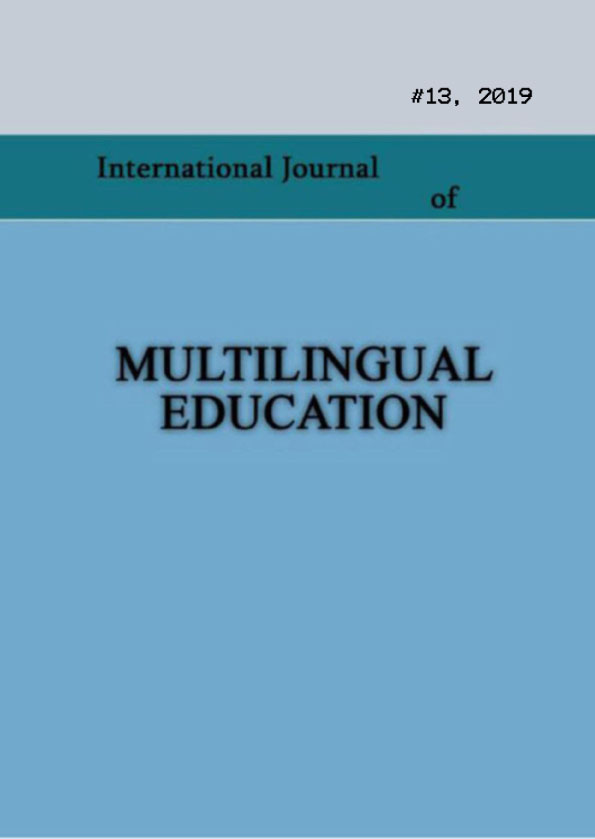The methods and norms of transferring Spanish and Georgian proper names into Georgian language
Keywords:
geopolitical situation of Georgia, linguistic problems of Spanish-Georgian translation, transcription and transliteration, alphabetical and phonetic differences between the Spanish and Georgian languages, toponyms and anthroponymsAbstract
Nowadays Georgia is faced with the economic, political and social problems, by which the integration process with the European Union is accompanied. The Association Agreement has given rise to the new challenges that finally aims at providing the collaboration among the member states of EU, including Spain on the issues such as economy, education, tourism, emigration policy, legal cooperation and safety.
The language along this line is the essential tool for the development of international relations. In this respect, the accurate translation of toponyms, anthroponyms and legal terms into the foreign language is of utmost importance. The paper deals with the research conducted on these topics, in particular, by the example of Spanish and Georgian - the two languages belonging to extremely distant language families, which differ from each other from the syntactic, morphological and structural aspects and have distinct alphabets and phonetic systems.
The paper mainly focuses on informing the findings of the still ongoing research, which will be beneficial to the linguists as well as the translators in the fields of diplomacy, law and politics. It is the first time the research has been conducted from the above - mentioned aspects, which, in its turn, develops certain complications. In addition, based on the historical background, the involvement of the third- Russian language in the ongoing processes makes some difficulties, as well.
References
Amparo H. A. (2008). Amparo Hirtado Albir, Traducción y traductología. Introducción a la traductología, Ediciones Cátedra, Madrid.
Chkhvimiani S. (2006). Sofi Chkhvimiani, Proper names in the translation of “Don Quixote, Tbilisi, Linguistic Papers, XXI. Publishing House “Kartuli Ena”. (in Georgian);
Don Quixote of La Mancha, by M. Cervantes. Translated by B. Bregvadze. (1994). in Georgian.
Enrique Alcaraz Varo, José Mateo Martínez y Francisco Yus Ramos. (2007). Las lenguas profesionales y académicas (eds.) Arial Lenguas Modernas.
Gascó G. Et al, (2017). Gascó Gavilán, I. Gvelesiani, A. Khuskivadze, K. Enseñar español en Georgia. En M. C. Méndez Santos, Galindo Merino (Eds.). Atlas del ELE. Geo lingüística de la enseñanza del español en el mundo. Volumen I. Europa oriental (pp. 1-22). Madrid: En ClaveELE. Recuperado de http://www.todoele.net/atlas.html
Georgian Soviet Encyclopedia (1986). Tbilisi, V. XI (in Georgian);
“Norms of the modern Georgian literary language” (1986). I. Tbilisi. (in Georgian).
Orthographic Dictionary of the Geographic Names of the Foreign Countries (1989). edit. Al. Kobakhidze, M. Chabashvili,. Tbilisi. (in Georgian)
Orthographic dictionary of Georgian (1968). Compiled by V. Topuria and Iv. Gigineishvili, Tbilisi, (in Georgian).
Ortografía de La Lengua Española de Real Academia Española, (2010) Madrid, Espasa, p. 123:https://en.wikipedia.org/wiki/Romanization_of_Georgian.
Downloads
Published
How to Cite
Issue
Section
License
Copyright (c) 2019 Marine Kobeshavidze, Sofio Peikrishvili, Ketevan Khuskivadze

This work is licensed under a Creative Commons Attribution-NonCommercial 4.0 International License.
Copyright (c) - Authors who publish with this journal agree to the following terms: Authors retain copyright and grant the journal the right of first publication with the work simultaneously licensed under a Creative Commons Attribution-Noncommercial 4.0 International License, which allows others to share the work with an acknowledgement of the work's authorship and initial publication in this journal. Authors are permitted and encouraged to post their work online (e.g., in institutional repositories or on their personal website) prior to and during the submission process, as it can lead to productive exchanges, as well as earlier and greater citation of published work (see The Effect of Open Access). Authors may enter into separate, additional contractual arrangements for the non-exclusive distribution of the journal's published version of the work (e.g., post it to a repository or publish it in a book), with an acknowledgement of its initial publication in this journal.

